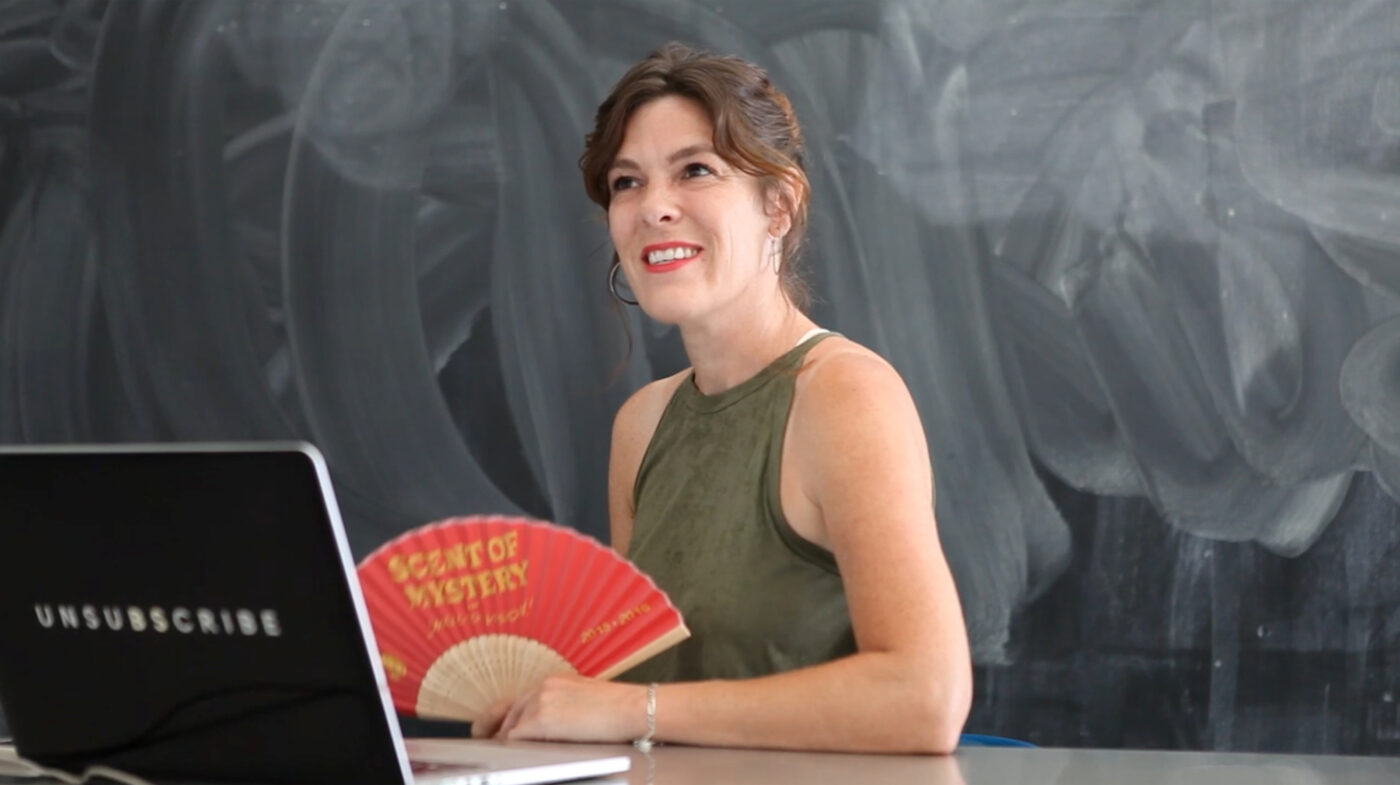

“There is nothing new under the sun, but there are new suns.”
–
Octavia
E. Butler

5–7 minute read, or the time it takes for a mid-day stretch.
How might smell, with its strong connections to memory and experience, bolster our ability to imagine a speculative future? This perfume recipe crafted by Saskia Wilson-Brown, Founder and Executive Director of the Institute of Art and Olfaction, offers a small glimpse of life centuries into the future, grounds us in the material realities of this potential world, and explains how desired scents are and will continue to be shaped by culture and environment.
BY SASKIA WILSON-BROWN
For our speculative scent future, I imagine a perfume that reflects the olfactory conclusion of the Anthropocene.
Every human culture has had a concurrent smellscape. For as long as humans have lived in society (possibly even before), they have intentionally incorporated natural elements from their landscapes into daily routines such as cleaning, beauty, and cooking. These homely smells made up the olfactory everyday, but scent has also had a simultaneous history of rarification, luxury, consumption, and exclusion. While most people had to use what was available nearby, more powerful people could afford rarer imported aromatics. Everyday aromas were commonplace and easy to access, and so were of less value. Scent implied class.
For our speculative scent future, I imagine a perfume that reflects the olfactory conclusion of the Anthropocene. When natural resources are scarce, all traditional natural aromatic resources could be considered a luxury. Paradoxically, all these traditional natural aromas will be readily available in another form, having been synthesized or recreated in chemistry and biology labs. Aromatic class structures will become a thing of the past.
The following scent is an imaginary smell created for a future consumer living in a human habitat that is exclusively urban, where historic natural perfume materials have been completely replaced by affordable synthetics or by new aromatics from the evolving natural world. Far from being created by a Master Perfumer, this perfume is the result of a sophisticated AI algorithm that responds to a user’s personality profile and desires. The user, here, wanted a perfume to be worn at the office that was reflective of the urban environment where they lived, while using nature-replicating aromatic materials that could be considered a little old fashioned. The perfume is produced by a vending machine, and delivered in a small recycled plastic bottle containing 10 grams of perfume. This quantity will allow the user enough perfume for the week, at which point they are expected to purchase another blend.
When composing a perfume for the skin, it is often advised to select materials that fit into a pyramid structure: the top notes are what people perceive first but they are also the most ephemeral. These are followed by middle notes, and—later—the base notes. The way the perfume unfolds over time creates an aromatic story, with a three-part structure. Modern perfumes, however, are often more linear, with a composition that aims to remain unchanged over time. This is increasingly possible with synthetic materials, as their performance is often more predictable. The scent imagined here is built on an old-fashioned structure of top, middle, and base notes that has as its goal to enliven and observe the world for which it was created.
When composing a perfume for the skin, it is often advised to select materials that fit into a pyramid structure.
Composition:
Top Notes
+ Orange Oil (biomaterial) – 0.7 gr.
+ Gunpowder Tincture (wild-foraged from spent bullet casings) – 0.8 gr.
+ Cracking Vinyl Accord (wild-foraged from junk yards) – 1.5 gr.
Middle Notes
+ Synthetic Rose Accord (replacing Rose Damascena, Morocco, extinct) – 2.3 gr.
+ Ocean Plastic Tincture (replacing Ambergris from Sperm Whales, extinct) – 0.5 gr.
+ Recycled Lipstick Tincture (replacing Orris Root from Florentine Iris, extinct) – 0.6 gr.
Base Notes
+ Cockroach Musk (replacing Musk from Musk Deer, extinct) – 0.2 gr.
+ Hot Cement Tincture (wild-foraged from downtown) – 0.7 gr.
+ Tire Rubber Tincture (wild-foraged from abandoned car lots) – 1.2 gr.
+ Synthetic Sandalwood Accord (replacing Mysore Sandalwood, India, extinct) – 1.5 gr.
Total: 10 grams, or approximately one week’s supply
Accord: A combination of aromatic molecules to create a given effect. Accords are most often used to replace expensive or rare natural materials, but can also create an impression of something that doesn’t in fact have a smell. This is known as a fantasy accord.
Bio-material: An aromatic compound created through the manipulation of yeasts.
Synthetic: An aromatic created by chemists, often to replace a rare or expensive natural, but most often for the pleasure of inventing new smells.
Tincture: A method of aromatic extraction where the material is steeped in alcohol for a sufficient duration of time.

[ID: Saskia holds a fan and smiles in front of an open laptop.]
Saskia Wilson-Brown
She // Her // Hers
Los Angeles, CA
After receiving an MA in Fine Art from Central Saint Martins, Saskia Wilson-Brown co-directed the Silver Lake Film Festival and ran international filmmaker outreach at Al Gore’s Current TV while producing initiatives around new models in the arts. In 2012, her interest in multivalent practices led her to create The Institute for Art and Olfaction (IAO), a nonprofit devoted to access and experimentation in perfumery. Through the IAO, she has launched projects with institutions such as Pulitzer Foundation, Getty Institute, Danish Film Institute, National Media Museum UK, Hammer Museum, Wallace Collection, New Mexico Highlands University, and many more. In 2013, she launched the Art and Olfaction Awards, an international awards mechanism for independent perfumers, and in 2018 she launched Open Sourcing Smell Culture, an initiative devoted to open source principles in perfumery. She recently served as a visiting lecturer at the Royal College of Art in London, and is currently working on a new radio show called Perfume on the Radio while pursuing a PhD about the historic and contemporary relationship between perfume, access and power.
